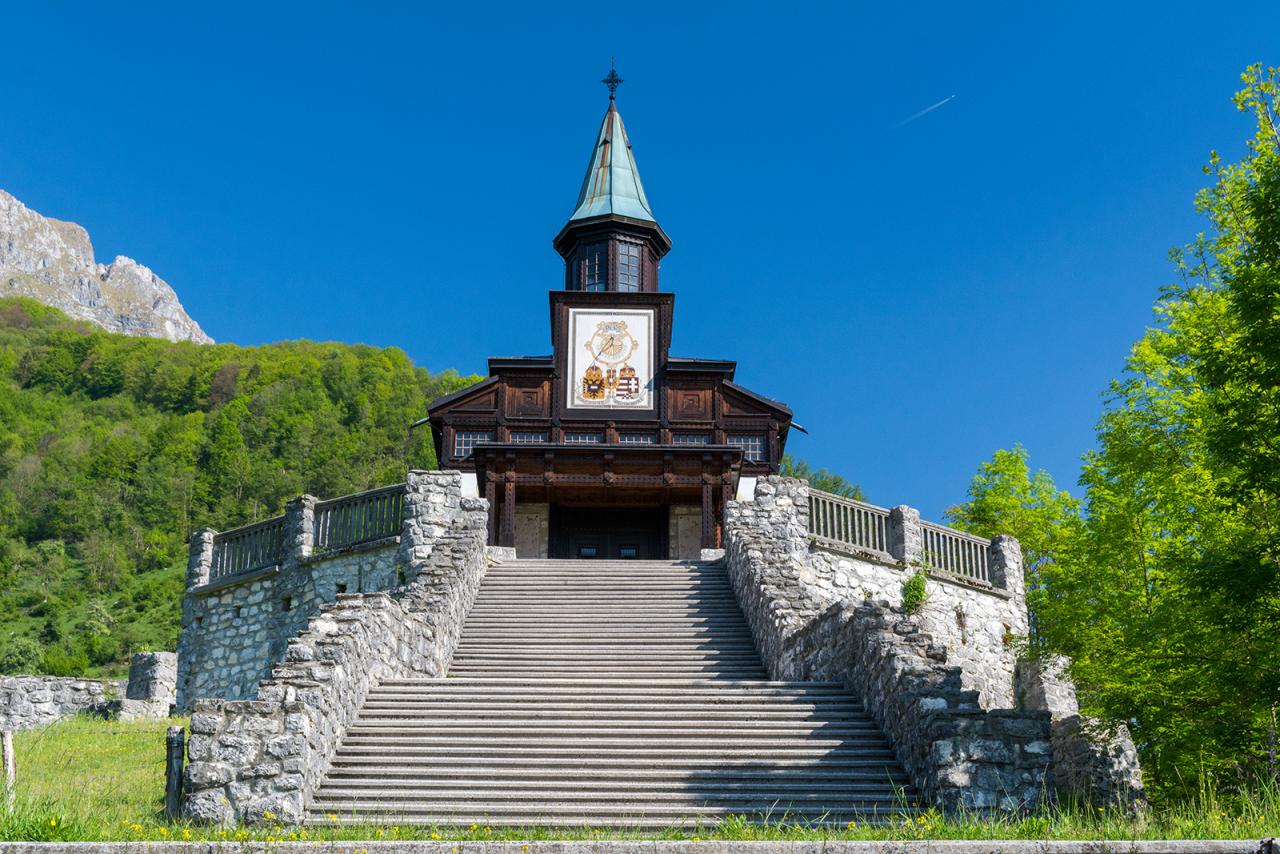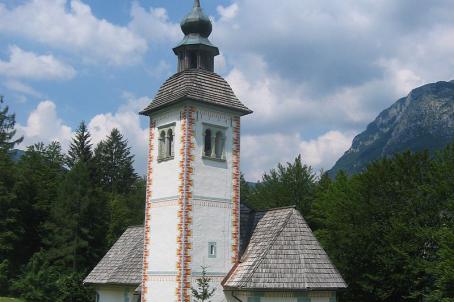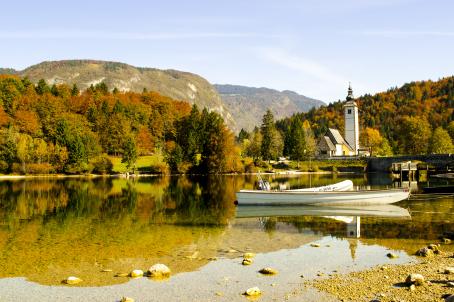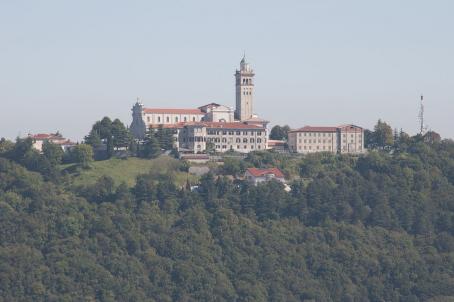Church of the Holy Spirit

The Church of the Holy Spirit was built in 1916 by the soldiers of the Isonzo front, during the First World War. It was designed by the Viennese architect, then Archbishop Remigius Geyling, a friend of Gustav Klimt. It is dedicated to the fallen soldiers of the First World War, regardless of their origins and culture, as evidenced by the inscription Ultra cineres hostium ira non superest (Do not hate beyond the ashes of the dead).





